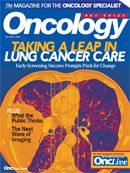Net-Guides: Brain Cancers
Useful Online Resources and Clinical Trials for Brain Cancer
//THE ONLINE ONCOLOGIST™
Society for Neuro-Oncology
The Society for Neuro-Oncology (SNO) describes itself as “a multidisciplinary organization dedicated to promoting advances in neuro-oncology through research and education.” The SNO Website has a resources section for medical professionals, which includes research grants, a literature and book review section, a career center for both job seekers and employers, an organization directory, a collection of useful links, and other resources for patients. This section contains information on SNO’s international outreach research fellowship program, as well as the institutions that have agreed to be potential hosts for it. The SNO Website features a news area with the latest articles, press releases, upcoming events, and a spot to sign up for the SNO e-newsletter. For a yearly fee, professionals may subscribe for either a full or associate membership with SNO, depending on whether they have a doctorate-level degree. Those undergoing scientific or clinical training may also sign up for a trainee membership at a lower fee. SNO members receive monthly issues of SNO’s offi cial journal, Neuro-Oncology, as well as discounts for the annual SNO Scientific Meeting and Education Day, e-blasts and neuro-oncology news, and access to the members-only section of the Website.
//THE EDUCATED PATIENT®
The Northwestern Brain Tumor Institute
The Northwestern Brain Tumor Institute (NBTI) is run by a multidisciplinary team of medical experts from the Robert H. Lurie Comprehensive Cancer Center and the Feinberg School of Medicine at Northwestern University, as well as the Northwestern Memorial Hospital. The NBTI is dedicated to treating patients with brain tumors, researching a cure, and providing patients with the information and resources. Patients can find information on the symptoms, diagnosis, types, and treatment options for brain tumors. The “Diagnosis” section describes all of the tests and imaging techniques used to diagnose a brain tumor, while the “Treatment” section offers brief descriptions of neurosurgical treatment, radiation therapy, and other available therapies. The “Types of Brain Tumors” section lists all the various brain tumor types, sorted into gliomas and nongliomas, and clicking on any of the types will bring up a window describing the tumor and where it occurs. Other resources offered by the NBTI include downloadable audio lectures, a glossary of terms, a newsroom, and a page with links to the Websites of other helpful organizations.
www.braintumorinstitute.org/home/index.cfm
//ONLINE CME
Current Perspectives in Adult Glioblastoma
Credits: 1.00
Fee: None
Expires: October 19, 2011
This CME activity focuses on emerging data concerning the diagnosis and treatment of glioblastoma in adults. The activity consists of a slideshow presentation with audio or viewable transcripts followed by a test on the material. The slideshow contains various charts, graphs, tables, and other information being discussed by the expert giving the presentation. On completing this activity, participants should have a full understanding of the diagnostic assessment of glioblastoma and the disease’s treatments, including surgery, radiation therapy, and chemotherapy. Participants should also be able to describe obstacles in treating recurrent glioblastoma and glioblastoma in special patient populations, as well as emerging treatment methods that have shown promising results for improving outcomes in adults with the disease. www.medscape.org/viewarticle/728592
//eABSTRACT
Notch1 Is an Independent Prognostic Factor for Patients With Glioma
Journal: Journal of Surgical Oncology
Authors: Li J, Cui Y, Gao G, Zhao H, Zhang H, Wang X
Purpose: Notch signaling has been shown to affect cell proliferation, differentiation, and apoptosis in both positive and negative ways (depending on cell type) in malignancies. This study sought to evaluate the levels of Notch1 protein expression in gliomas in order to determine whether Notch1 expression was associated with glioma survival rates. For the study, the researchers collected gliomas from 274 patients who had not undergone chemotherapy, then assessed the expression of Notch1 protein by immunochemistry assays. They then analyzed the staining evaluation results statistically in relation to a number of clinicopathological characteristics. The associations of Notch1 expression with glioma prognosis were assessed using Kaplan-Meier and Cox proportional hazards regression models. Results: The study found elevated expression levels of Notch1 in gliomas compared with control normal brain tissue. It also found that Notch1 expression was closely associated with glioma progression, as expression levels increased from grades I to IV glioma. Patients with Notch1 positive gliomas had a significantly lower overall survival rate than patients with Notch1 negative tumors, and multivariate analysis showed that Notch1 was an independent prognostic factor for patients with glioma. The authors concluded that Notch1 is upregulated in glioma and related to tumor progression. They also noted that Notch1 could serve as a novel prognostic marker that is independent of, and additive to, the World Health Organization grade.
//CLINICAL TRIAL
Safety Study of Intracerebral Topotecan for Recurrent Brain Tumors
Study Type: Interventional
Age/Sex Requirements: 1 years (None)
Sponsor: Columbia University
ClinicalTrials.gov Identifier: NCT00308165
Purpose: This clinical trial will test the chemotherapy drug topotecan in the treatment of recurrent brain tumors using a novel drug delivery strategy called intracerebral clysis (convectionenhanced delivery). Intracerebral clysis uses a microinfusion pump to establish a pressure gradient in the brain using catheters implanted in the tumor and surrounding tissue. This gradient creates convective forces that distribute a therapeutic agent throughout the tumor and surrounding tumor bed. The primary outcome measures of the study include progression-free survival, overall survival, and grade 3 adverse events.




